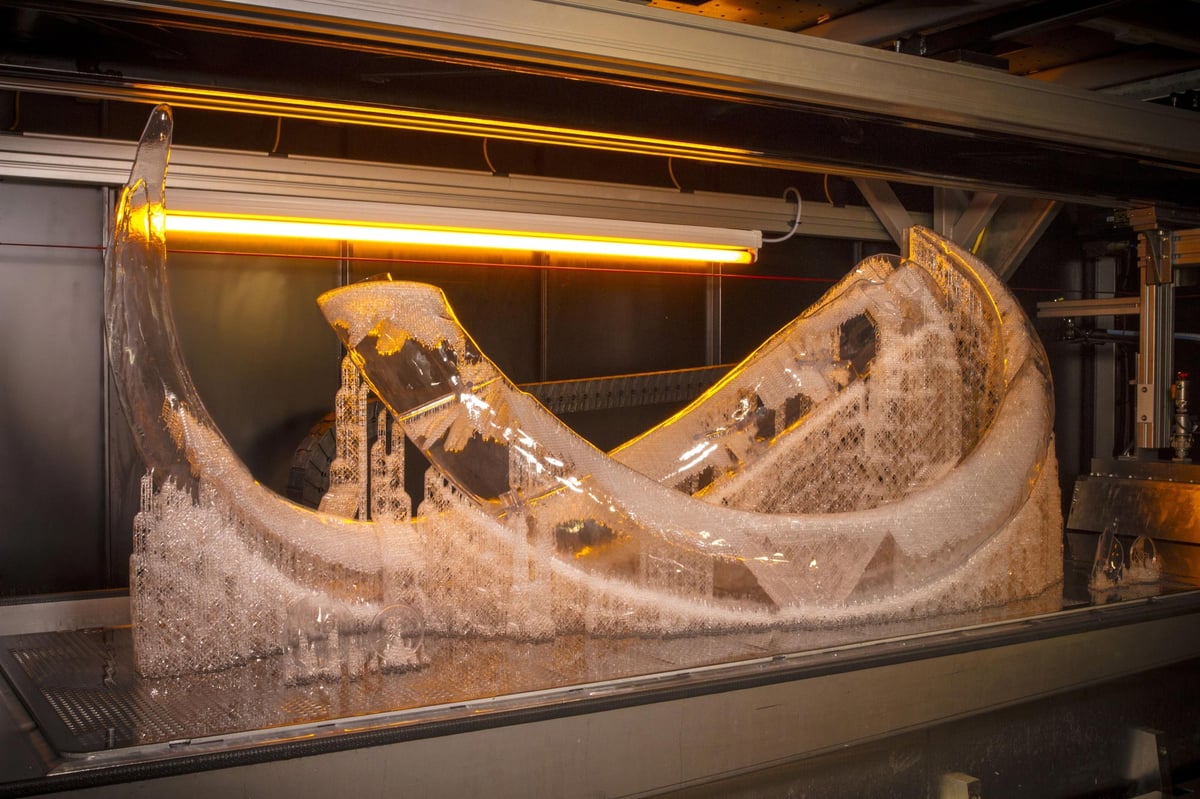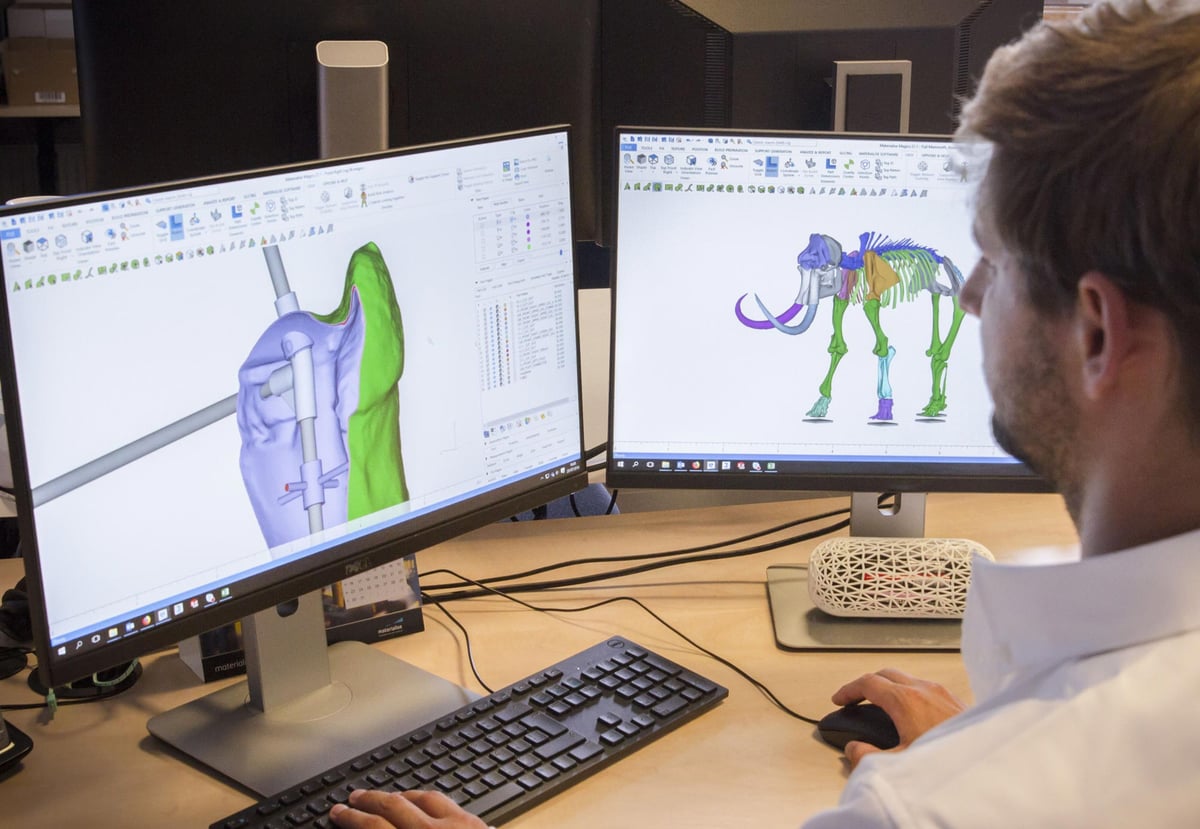The boffins at Materialise, the Belgian additive manufacturing solutions specialist, have recently broke word of a mammoth task they’re working on.
Said to be the largest SLA project the company has ever attempted, Materialise will digitizing and recreating the Lier Mammoth.
Extraordinary for being the first full mammoth skeleton in Western Europe, the Lier Mammoth has stood on display at Brussels’ royal Belgian Institute of Natural Sciences since 1869. The Lier Mammoth will be making a homecoming of sorts when it returns to the city of Lier in October, albeit as Materialise’s thoroughly modern recreation.
The process of fabricating a full size mammoth is, understandably, a big one, drawing upon many of the tools at Materialise’s disposal.
Speaking on some of the quirks of the project, Gertjan Brienan, Project Manager at Materialise said “The original skeleton presents some inaccuracies which reflect the knowledge at the time of the original mounting 150 years ago. One example is the length of its tail, which we now know is shorter than initially thought.”
Other issues with the original, such as a missing left tusk, are also opportunities for the replica to fill in the blanks. Brienan continues “We mirrored the right tusk and recreated it in Materialise 3-matic to achieve a more precise replica than the wooden tusk that was used to complete the original skeleton… This means the 3D-printed mammoth will be more scientifically accurate than the original.”

To Make a Mammoth
To begin with, scans of each of the mammoth’s 320 bones were required, which Materialise painstakingly captured in collaboration with the museum’s resident paleantologist.
Digitized for cleanup, the company’s proprietary Materialise Magics software was brought to task to make these scans printable.
Besides fabricating the skeleton, another objective of Materialise’s was to improve upon the 19th-century structure holding the original skeleton upright. Eschewing an external scaffold as has held the original since the 19th-century, the company settled on a near-invisible network of modular carbon tubes integrated into the bones themselves — a design choice that relied heavily upon the work of Materialise’s daughter company, RapidFit.
For the printing of the bones, Materialise is using nine of its own proprietary Mammoth Stereolithography printers (no joke, they’re actually called that). These behemoth-like resin 3D printers each feature a print volume of 220 x 70 x 80 cm, making them the ideal machines for larger than life (or in this case, 1:1) prints.
In total it will take more than a month of continuous printing time to fabricate the bones. Following this, post-processing will take the form of cleanup and then painting to give the prints a lifelike finish.
Source: Materialise

License: The text of "Materialise to 3D Print a Full Mammoth Skeleton" by All3DP is licensed under a Creative Commons Attribution 4.0 International License.